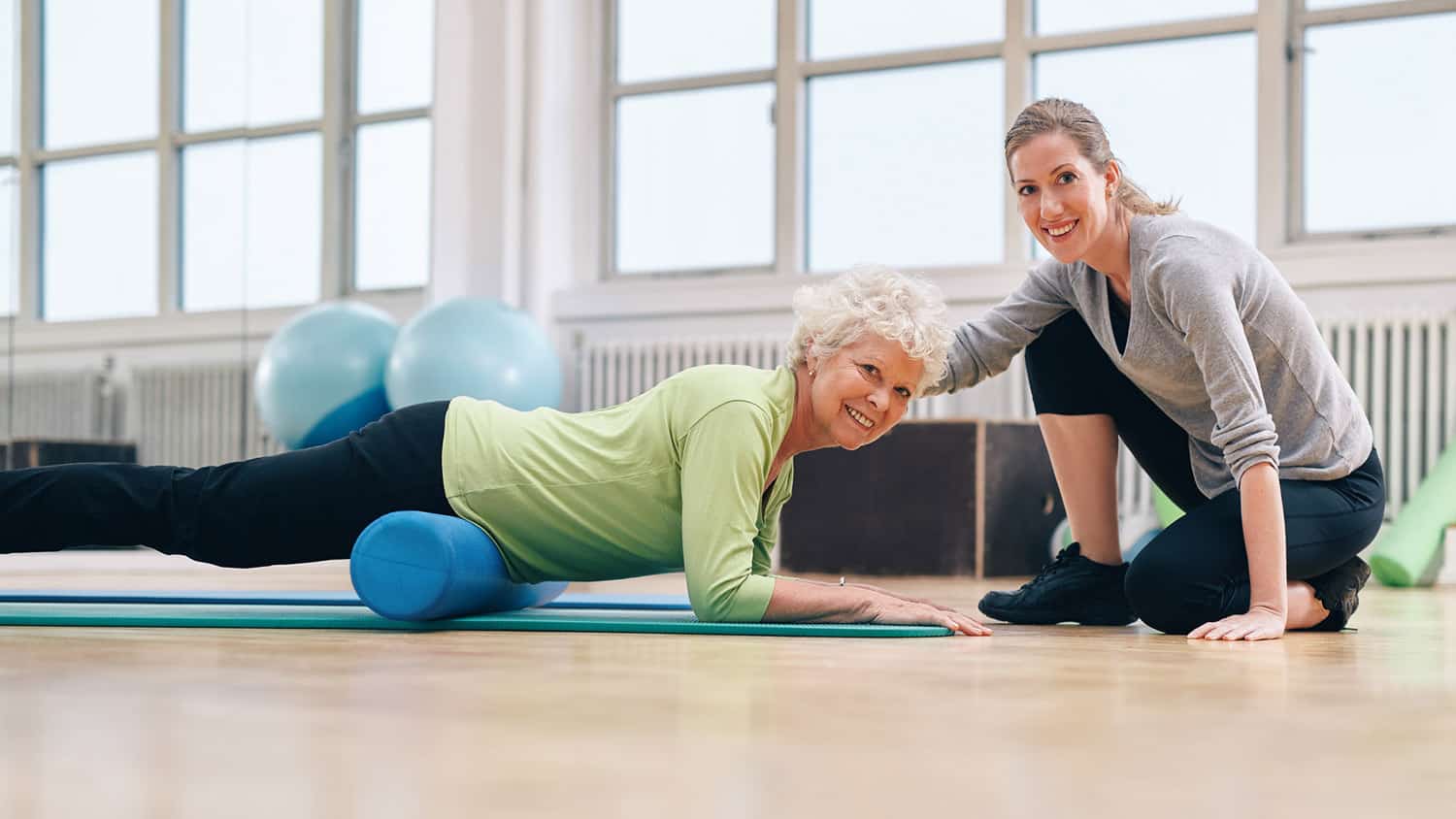
How to Roll Out Muscle Kinks, Knots and Soreness with Foam Rolling
It starts simply enough: You graciously help a friend move, go on a ‘short’ hike that becomes an all-day event, or simply wake up and – surprise! – something new hurts.
Whatever the reason, you’re achy, sore and in need of a hot bath or a massage. But you’d first have to scrub out the tub, which still has a pink stain from the time you bathed the dog in tomato juice after he chased down that skunk.
By the time you finish scrubbing, you’ll be sorer than when you started, which sort of defeats the purpose. Or you could schedule a massage. But the thought of being in a roomful of people sipping cucumber water and listening to a fake waterfall, naked except for a flimsy bathrobe, doesn’t appeal, either.
So, you stretch. But it’s not enough. You need some serious muscle release if you’re going to feel any kind of relief. Then you remember the foam roller you bought in January as part of your vow to treat yourself better in 2022, even though you didn’t know how to use it.
What on Earth Is Foam Rolling?
You can find foam rollers online, in sporting goods stores and even in some grocery stores. In case you haven’t seen a foam roller, it’s exactly as it sounds: a log-shaped piece of hard foam that looks like a giant cigarette. You’ll find them in different lengths, but they’re most commonly 36 inches long.
They’re traditionally white, but fashionistas caught wind of them and now they’re available in just about every color. Some have bumps, ridges and a host of other accoutrements to ensure your muscles never forgive you.
‘Cause here’s the thing: If you use it correctly, it hurts like the dickens (not Charles Dickens, since these torture objects did not even exist in his time).
But, like a deep tissue massage, the reward at the end is worth the uncomfortable process. In other words, it only hurts until your muscles realize you’re not joking and they better let go or else.
How Does It Work?
Foam rolling is different than stretching. Lying or pressing a body part over a foam roller breaks up the fascia (the white tissue) surrounding the muscle. It’s the same type of white, filmy tissue you find around a chicken breast. (Gross analogy, but the human body isn’t always filled with hearts and flowers.)
Once the fascia releases, the muscle is able to stretch more effectively. A foam roller also helps increase blood flow to the muscle by getting rid of adhesions in your muscles.
It’s why the technique is referred to as self-myofascial release, a.k.a. self-massage. Studies published in the International Journal of Sports Physical Therapy (Nov 2015) show foam rolling can improve range of motion – i.e., flexibility – speed workout recovery, and decrease muscle pain.
In other words, it’s a good hurt. Some manufacturers offer softer foam rollers, which ease the discomfort a bit.
The General Rules of Foam Rolling
- Use it before your workout as part of your warm-up and/or after your workout to speed recovery and ease muscle pain.
- Roll over it slowly and pause at ‘trigger points’ in the muscle that are particularly painful. Breathe and try to relax the muscle to allow the foam roller to gently loosen the knot.
- Move on to other parts and repeat.
- Include it along with traditional stretches whenever you feel you need to untie some serious knots.
- Remember to breathe! We tend to hold our breath when stretching (called ‘guarding’) and foam rolling, so focus on breathing into the stretch and on relaxing the muscle to get the most out of the technique.
Here’s a short video to start you off with the basics.
Do you use a foam roller? If so, how has it helped you? Do you have any tips you’ve discovered along the way? Please share in the comments below.
Tags Fitness Over 60







This was an awesome article. Thank you for this! I learned a lot.